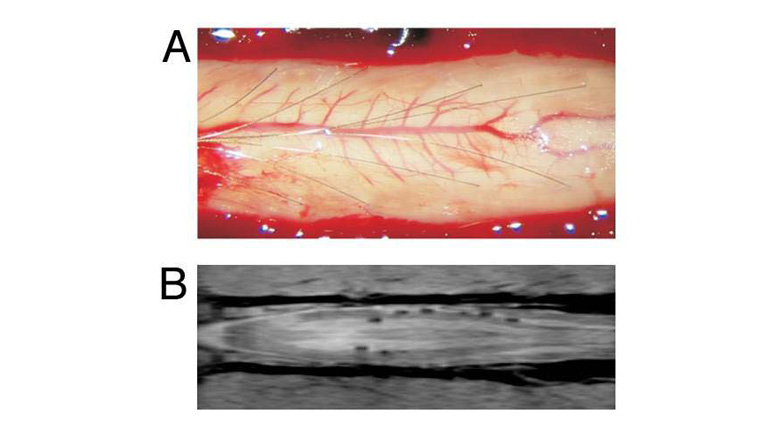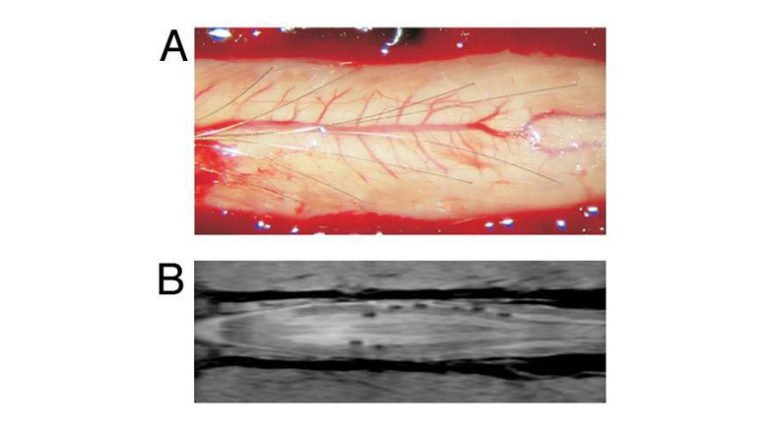
Intraspinal microstimulation (ISMS) is currently under investigation for its ability to restore function following spinal cord injury and aid in addressing basic investigations of the spinal cord in feline and murine (rat) models. In this report we describe the procedures for fabricating and implanting intraspinal microwires, with special emphasis on the rat model. We also report our results on targeting success and long-term stability and functionality of the implants. Early targeting with implants fabricated based on general “average” dimensions of the spinal cord was approximately 50% successful in reaching the proper targets within the ventral grey matter in cats. Improvements in insertion technique and the use of multiple contact electrodes have raised the targeting success to 100%. Furthermore, the manufacturing of ISMS arrays has been improved by the use of magnetic resonance imaging to create subject-specific implants for cats and track the location of the arrays post-implant. In the rat, our procedures have produced desirable targeting of all recovered microwires. We speculate this is due to the different targeting parameters and the shorter depth of insertion in the rat spinal cord. Although there is a heightened mechanical mismatch between the 30 μm-diameter microwires and the small rat spinal cord, chronic implantation and stimulation produce limited histological damage and do not compromise function. Furthermore, despite the increased difficulties of implanting into the smaller rat spinal cord, ISMS is effective in activating spinal cord networks in the lumbosacral enlargement in a manner that is safe, stable and reproducible.

